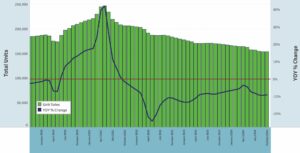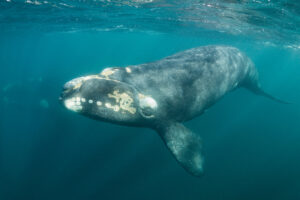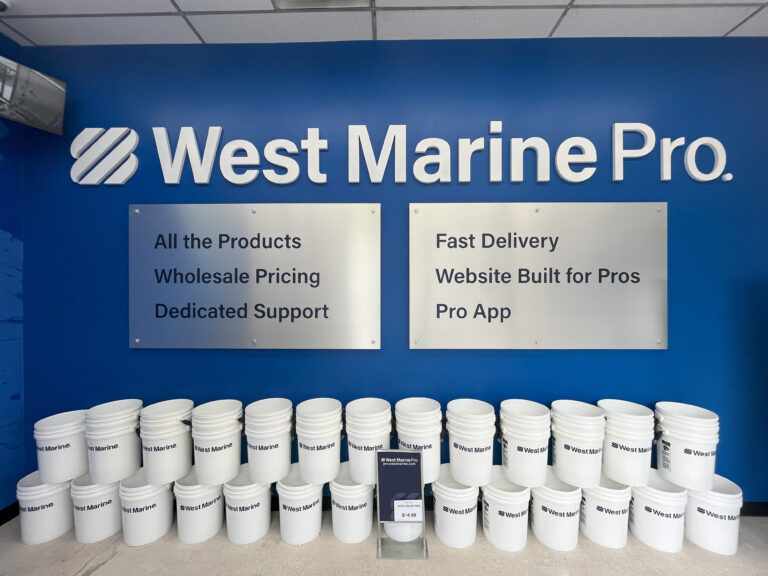Many go beyond regulations, profiting from marriage of economic and environmental benefits

In the not-too-distant past, marina and boatyard operators saw a swell of proposed environmental regulations as a threat not only to their livelihoods, but the boating discipline as well. Some of them included:
• Permitting storm water runoff.
• Requiring paints and solvents — everyday items around the typical marina service facility and boatyard — to be disposed of as hazardous materials.
• Demanding that bottom paints and wash water be captured for removal.
These, and other requirements, were viewed as onerous regulations being levied by federal, state and local government agencies. It was enough to make even the most die-hard marina operators sound the end of the marina business as they knew it.
But it turns out the regulations may have been a good thing. More and more marina operators today are taking an active approach, and going beyond what lawmakers require, to protect boating’s most valuable resource — the water. But they’ve also come to realize going green makes good business sense because boaters have become much more environmentally savvy.
“Today’s marina customers are much more environmentally conscious than they were 10 years ago, and that’s because of the whole environmental awareness within the population throughout the country and the whole focus on our environment as a nation,” said Bill Anderson, president of Westrec Marinas, a large marina operator based in Encino, Calif. “They come to the marina with an already environmental awareness. So, if [marina operators] are not at the same level they are, you are in a sense missing an opportunity to create a long-term relationship with that customer.”
In fact, Anderson and other marina industry experts say, marinas have discovered their green initiatives can be a draw for boaters in a market with several locations to choose from. Boaters will invariably choose the one with the “greenest” reputation.
“It’s good sound business, as well as being good sound environmentalism in responding to what the customer wants to see,” added Anderson. “Nobody wants to boat in dirty water. People want clean water. They want clean, environmentally sound practices and maintenance, and they’re looking for [marina operators] to do that.”
The cost of going green could be a worthwhile investment, especially if it gives one marina a competitive edge, Anderson said.
What follows is a sampling of marinas and boatyards from throughout the country that have gone green. In most cases, environmental regulations were the initial motivating factor. But these operators soon embraced the environmental and monetary benefits of going green.
Most have earned Clean Marina, Clean Boatyard or Clean Retailer designations from their state environmental protection agencies. And all promote their green initiatives to existing customers and the community at large.
Kingman Yacht Center (Mass.)
Kingman Yacht Center in Cataumet, Mass., on Buzzards Bay, is a 400-boat marina with a combination of slips and moorage, but no rack storage. Scott Zein, owner and president, describes the marina as a boating community, based around its active yacht club. “We’re fortunate to be full, and it’s been that way for quite some time,” he said.
For that reason, Zein has promoted the boatyard’s many environmental improvements to clients. “When they see changes and, in some cases inconveniences, they understand what we’re trying to do and the point behind it,” he said.
And the point is to help protect the resource, which in this case is pristine and picturesque Buzzards Bay.
“We realize our existence and future growth rests on our ability to protect the environment,” Zein said in explaining why his facility has gone green. “If the harbor goes to pot, then nobody is going to want to be here.”
Zein has invested heavily during the last nine years in a variety of improvements, including an extensive septic system to accommodate waste from the marina. More recently, however, Zein said the marina has installed a system to collect water runoff from pressure-washing of hull bottoms.
“So now any water you can capture … is put into a tank, is given UV treatment, filtered through carbon filters and is pumped right back into the pressure-washing system,” Zein said. “It comes out as clear, odorless water that we can use again.”
The tank is cleaned of sediments, which are trucked off the property several times a year.

More recently, Zein has installed a $125,000 system to deal with storm water runoff at the marina, which the Environmental Protection Agency requires of new and expanding marinas. It captures the first inch of storm water flow coming directly from the marina’s facilities and parking lot.
“We were told, as an industry, late last year by the EPA that they had ended their educational phase relating to storm water and were going to start their enforcement phase,” Zein said. “I decided rather than wait to do things on their timetable, I’d rather do it on ours.”
Zein installed an extensive system, which traps rainwater and transfers it into “rain gardens,” where the water is filtered and cleaned.
The projects required lots of excavation, the loss of some parking places and rerouting of traffic. Naturally, a few customers complained about new inconveniences, but Zein said the end result was worth it.
“We had not been told to do this, but we figured it was coming,” Zein said. “So we went ahead and did the construction.”
The system is part of the marina’s overall written storm water pollution prevention plan. “This is just an element of it that makes the whole thing work,” he said. “The end result has been that we’re seeing nice clear water going back into the harbor.”
Florida marinas and boatyards
In Florida, where the push to go green is tantamount to religion, marinas and boatyards practically are waiting in line to qualify for Clean Marina, Clean Boatyard and Clean Retailer designations.
A spin-off of the 1992 Clean Vessel Act, the Clean Marina program is a voluntary, self review and recognition effort for boatyards, marinas and boaters. It outlines a checklist of 125 pollution-prevention action items tailored to each marina or boatyard, which is reviewed for compliance.
Numerous states have implemented Clean Marina programs, including Florida, where operators proudly display their CM designations on Web sites, signage and promotional materials.
In South Florida, Westrec’s Harbour Towne, Sunrise Harbor and Hall of Fame marinas have been recognized for their green activities.
Harbour Towne, in Dania, Fla., earned Clean Marina and Clean Boatyard designations in 2001. It also earned a 2002 Broward County Emerald award for innovative procedure and process improvements. Hall of Fame was the first marina in Fort Lauderdale to earn the Clean Marina designation in 2002. Sunrise Harbor earned a Clean Marina designation in 2003.
In addition to implementing best practices to keep their boatyards clean, they also involve boaters in the annual Waterway Cleanup. Sponsored by the Marine Industries Association of South Florida, the event draws 2,000 land and water volunteers who pick up trash from area waterways. At this year’s event, held in March, more than 35 tons of trash was removed. Scott Solomon, manager at Hall of Fame Marina, said the Harbour Towne facility is a waste collection site for the event.
Implementing clean business practices is costly, but not as expensive as many marina and boatyard operators once thought; especially if the marina is newer and was built with systems in place.
But what about an older marina?
John Lucarell is harbormaster at Monroe Harbour Marina, a city-owned marina in Sanford, Fla. Lake Monroe is a pristine waterway that connects with the St. Johns River. “It is on the downtown lakefront, so it’s an easy walk to restaurants and entertainment,” Lucarell said.
The marina offers dry stack storage for up to about 110 boats and 250 wet slips, as well as a full service yard with a 35-ton Travelift, and boat brokerage. The facility has earned Clean Marina, Clean Boatyard and Clean Retailer designations from the Florida Department of Environmental Protection.
“When I first looked at the program I was a bit overwhelmed because a lot of their ideas were based on a new facility that had pumps for storm water runoff,” Lucarell said, adding that in the old days, rainwater flowed directly off the street and parking lot into the lake until a water retention and filtration system was installed. “But when I got into it, I saw what the state was trying to do and decided it was a good idea to make people aware of the environment and the impact boaters have.”
Lucarell invests a lot of time and energy keeping boaters up to speed on what they can do to keep the water clean. Boaters must notify the marina when they bottom-paint or sand, so tarps can be placed in the work area to trap dust, paint spray and paint chips. “Naturally, we track all of that,” Lucarell said.
Signs are everywhere, on dumpsters, the docks and trash containers, reminding boaters to use safe environmental practices. The marina even uses garbage bags that are 100 percent biodegradable in containers, he added.
In Riviera Beach, Viking Yacht Co., based in New Gretna, N.J., has earned the Clean Boatyard designation for its sprawling customer service site. Dedicated to servicing Viking’s fleet of owners, many of whom are preparing for cruises to the Bahamas and the Caribbean, the boatyard offers 18 deepwater slips, a 150-ton Travelift and specializes in everything from basic maintenance and warranty repairs to major retrofits. It also operates a ship’s store.
Here, the focus starts with everyday housekeeping and paying attention to the byproducts that end up in the air, water or ground.
The facility has a recirculating system to capture storm water and washing water. “Nothing goes back into the ocean,” said facility manager Steve Lewis.
A filter removes paint chips, heavy metals and other pollutants. The clean water is then stored in a sump and reused.
The facility also recycles old oil, fuel filters, spent oil and coolants. “We keep logs on that, and nothing goes to the dumpsters or gets away from us without documentation,” Lewis said.
Paints and hazardous materials are stored in drums and taken away by a hazardous-material disposal company.
“Periodically, we have the (state) EPA come in,” he said.
Boatyards generate a lot of toxic waste, and cleaning and tracking it all can be time-consuming and expensive, but Lewis does not complain.
“I want my kids growing up around water they can swim in,” he said.
This article originally appeared in the September 2008 issue.











